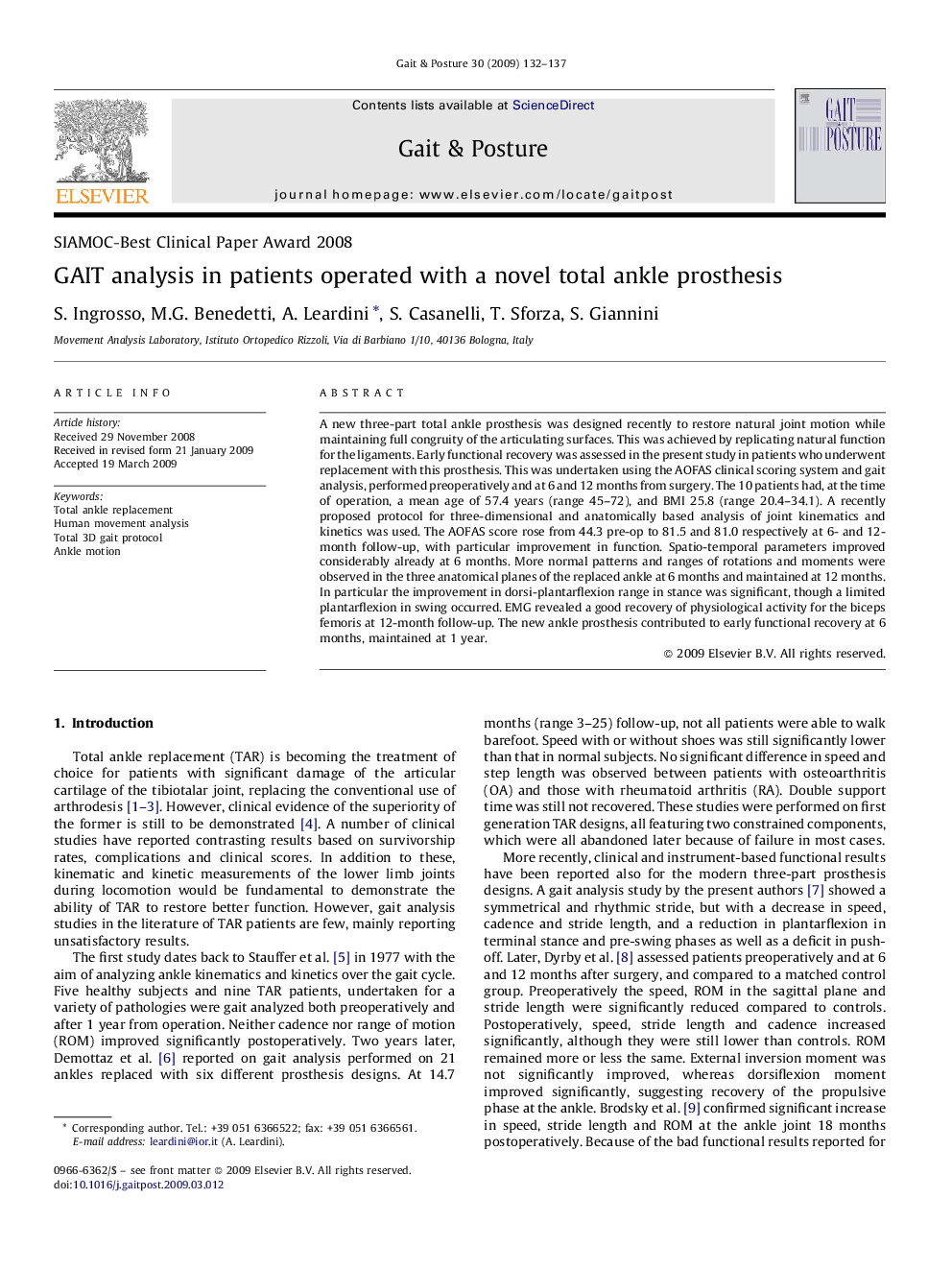| Article ID | Journal | Published Year | Pages | File Type |
|---|---|---|---|---|
| 4057289 | Gait & Posture | 2009 | 6 Pages |
A new three-part total ankle prosthesis was designed recently to restore natural joint motion while maintaining full congruity of the articulating surfaces. This was achieved by replicating natural function for the ligaments. Early functional recovery was assessed in the present study in patients who underwent replacement with this prosthesis. This was undertaken using the AOFAS clinical scoring system and gait analysis, performed preoperatively and at 6 and 12 months from surgery. The 10 patients had, at the time of operation, a mean age of 57.4 years (range 45–72), and BMI 25.8 (range 20.4–34.1). A recently proposed protocol for three-dimensional and anatomically based analysis of joint kinematics and kinetics was used. The AOFAS score rose from 44.3 pre-op to 81.5 and 81.0 respectively at 6- and 12-month follow-up, with particular improvement in function. Spatio-temporal parameters improved considerably already at 6 months. More normal patterns and ranges of rotations and moments were observed in the three anatomical planes of the replaced ankle at 6 months and maintained at 12 months. In particular the improvement in dorsi-plantarflexion range in stance was significant, though a limited plantarflexion in swing occurred. EMG revealed a good recovery of physiological activity for the biceps femoris at 12-month follow-up. The new ankle prosthesis contributed to early functional recovery at 6 months, maintained at 1 year.
